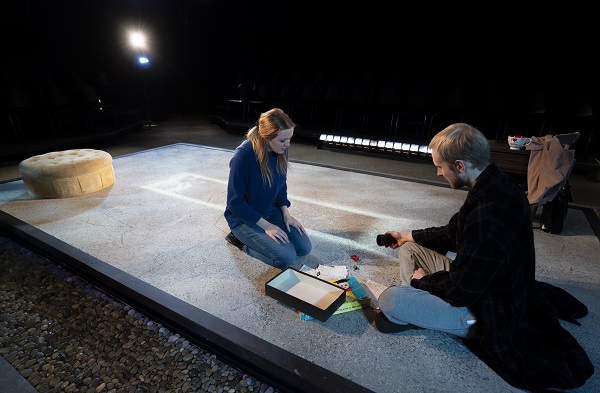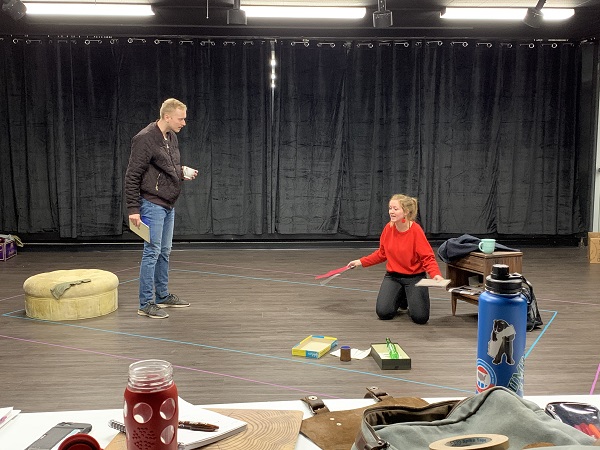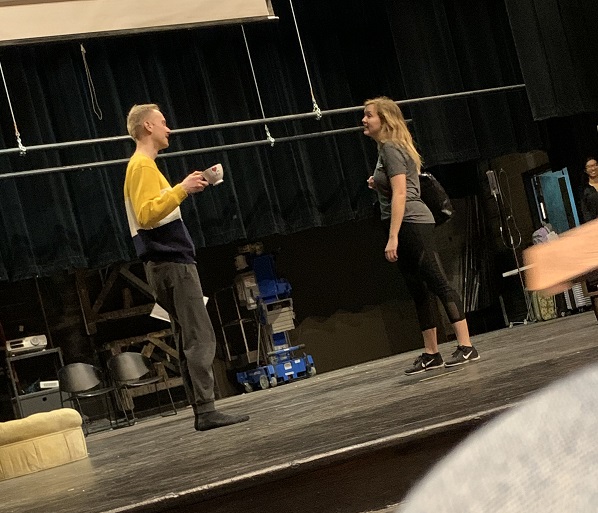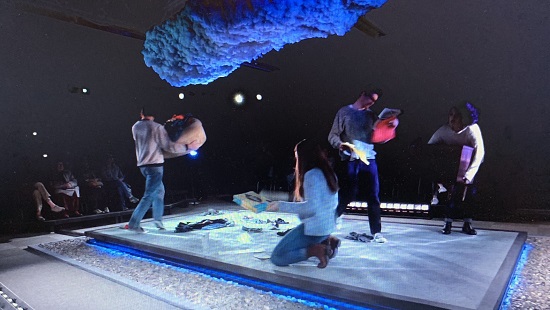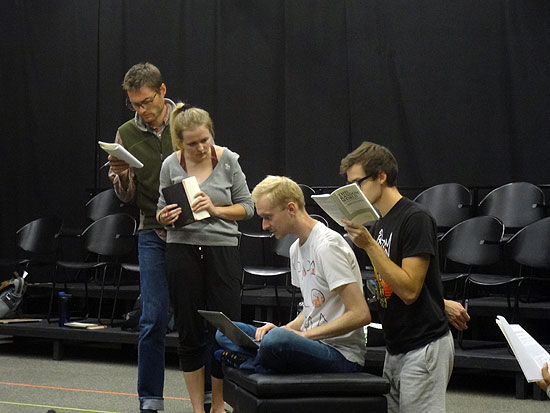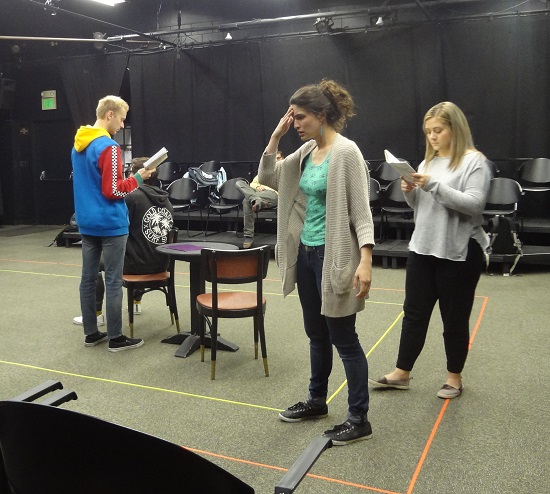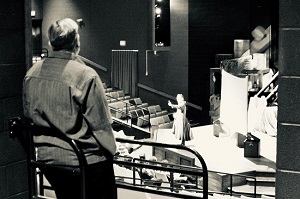
A Rumination from my dramaturgy of Steven Dietz’s This Random World directed by David Lee-Painter (DLP).
Our production of This Random World The Myth of Serendipity was invited to perform at Region 7 of the Kennedy Center American College Theatre Festival!
Months had passed since any of us had laid eyes on the set or thought about the script. People had moved on to other projects. Students graduated and in a myriad of other ways life has gone on. Last week we completed remounting This Random World to share it 1200 peers at the annual festival. Part of the remount included a benefit performance to celebrate and finance the trip.
Immediate challenges were identifying returning company members, rehearsal space, and scheduling rehearsals. The next two shows in the university season by this time were cast and in production. Those shows included members from This Random World. Seven people were unable to return. The bulk were from the technical side; two were performers.
To fill the gaps, one understudy moved from a worldbuilder to speaking role. A member of the artistic staff became a worldbuilder and another worldbuilder was recruited into the company as were the needed technicians.
Then the question of rehearsal space: the Forge Theatre, an 80-seat black box configured in the round, where the show was originally staged was unavailable. Also, the hall at KCACTF is a 350-seat theatre with a thrust stage. Ideally, we preferred to work in a similar hall. The best choice was the Hartung Theatre, the 400-seat university mainstage, but it also had a show in rehearsal.
In the end, we cobbled together five rehearsals in three different locations. Two days were spent running concurrent rehearsals in the 30-seat studio and a classroom space—much the way the original rehearsals were run—and three days at Hartung. The set diagrams on the floors for the alternate spaces were at ¾ scale and ½ scale respectively. Hartung would have the actual set pushed downstage at a slight angle. It would also be the location for the benefit.
Logistics sorted, we went to work. Due to the rehearsal process which included an understudy performance, the understudy arrived already off-book and familiar with her blocking. She was one of two actors who traveled over 7 hours to rejoin the company.
Remounting a show, there is a desire to present the original production but prevent it from ossifying. Blocking would change as we adjusted to a thrust stage. And new company members would alter the energy.
I was curious how the venue hopping would effect the work. Some of the spaces were so small it seemed a waste of time to even meet there. Co-director David Lee-Painter disagreed and wanted any opportunity to get the company back moving through the show and feeling it again.
Expanding and contracting the performance area was a benefit. We were unable to keep tightly to our staging and were forced to tell the story with the conditions presented. In the end, it strengthened the storytelling. Instead of just fudging the blocking to fill the stage space, the movement changes were motivationally driven.
For example, in a scene where Tim is trying to prove to Rhonda that he is not dead, They’d kept together in a tight stand-off to accentuate the tension. During the remounting, Rhonda moved away from Tim. He caught her arm and brought her around, reversing their places. The action of the scene demonstrated the emotions Rhonda was feeling at finally meeting a deceased person. It also fed Tim’s desperation to correct the mess he’d made by faking in his own death and suddenly having to prove–somehow–that he was alive. It also transformed the encounter from stand-off to tug of war.
In the above images, is the opening scene set in Tim’s apartment. The left hand photo was as it was seen in the Forge. Center, the actors working in the studio on the 3/4 scale stage, and on the right on the mainstage.
The remounting process provided us with an unusual opportunity to leave a production and return several months later with some of the same but a few different company members. It gave another layer of the experience of shifting connections that are so vital to Dietz’s show. We’re looking forward to sharing it with our peers as the festival.
